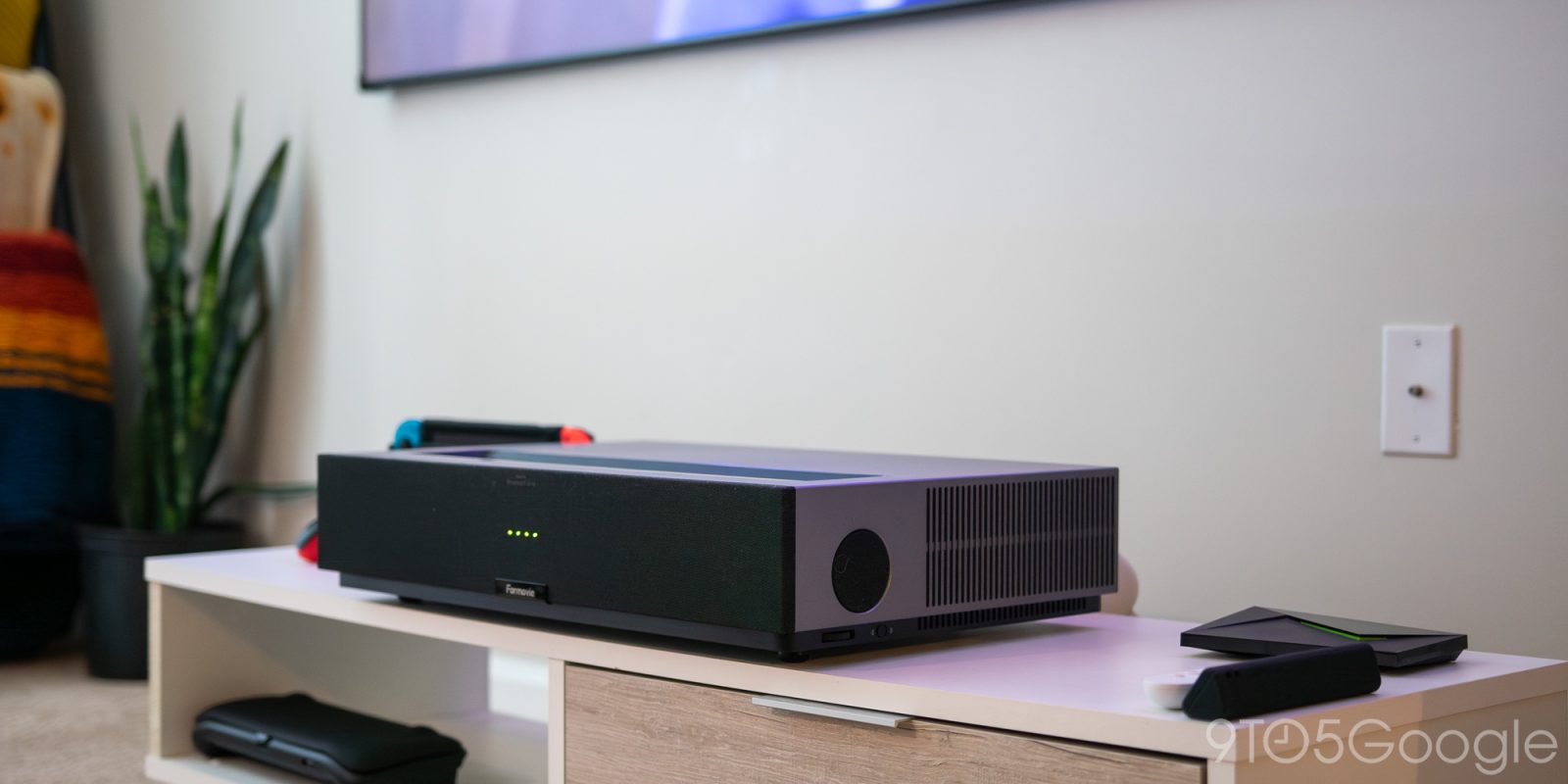
There are generally two trains of thought to digesting streamed media in a common space. The first is the most common and involves a nice UHD or 4K TV. The second, less common approach, is getting a smart short-throw projector that takes up minimal space and offers up to 120 inches of clear, crisp 4K video. The Formovie Theater 4K projector does just that, and man do we love it.
More screen space for little sacrifice
To provide a little bit of basis, short-throw projectors are some of the newest forms of entertainment displays to hit the market in the last couple of years. Rather than relying on a large distance with traditional bulbs, laser short-throw projectors like the Formovie Theater are able to cast an image at an acute angle, allowing for minimal extra space needed in your living room.
This results in a huge display without really needing all that space, just the free room on your wall. In this review, we put the Formovie Theater through its paces using a 120″ Epson screen. Generally speaking, UST screens are better at capturing the laser emission from short-throw projectors while also rejecting ambient light. So, in essence, daytime viewing is easy and completely unaffected, so long as you’re not setting the screen up next to a window.

In comparison to a modern OLED TV, you’re getting exponentially more screen size for a relatively small increase in price. The Formovie Theater makes the argument for UST projectors more than most devices, as it comes at a reasonable price and really hits the mark on quality.
Build
The Formovie Theater comes in a very nice package, with clean boxed-off edges and a relatively small footprint. Coming in an unassuming black and grey colorway, it does well to blend into the foreground while watching media. Some other projectors that have brighter colors find themselves the focal point during movies and shows, which isn’t something you’re looking for, as UST projectors are generally pretty large.

The Theater comes with built-in speakers and plays into the Google ecosystem well, with built-in Android TV. As a wonderful little touch, Formovie incorporates a small strip of four LED dots that light up when you say, “Hey, Google,” or activate the Assistant. A physical mute slider lays on the right side, which is an even nicer touch.
The bottom of the Theater holds several adjustable feet for really dialing in your picture. As for connectivity, we found that the Theater housed exactly what we needed with 3 HDMI ports – one of which is eARC compatible for various sound options. Besides HDMI, there are also two USB ports and a physical LAN connection for minimal latency.
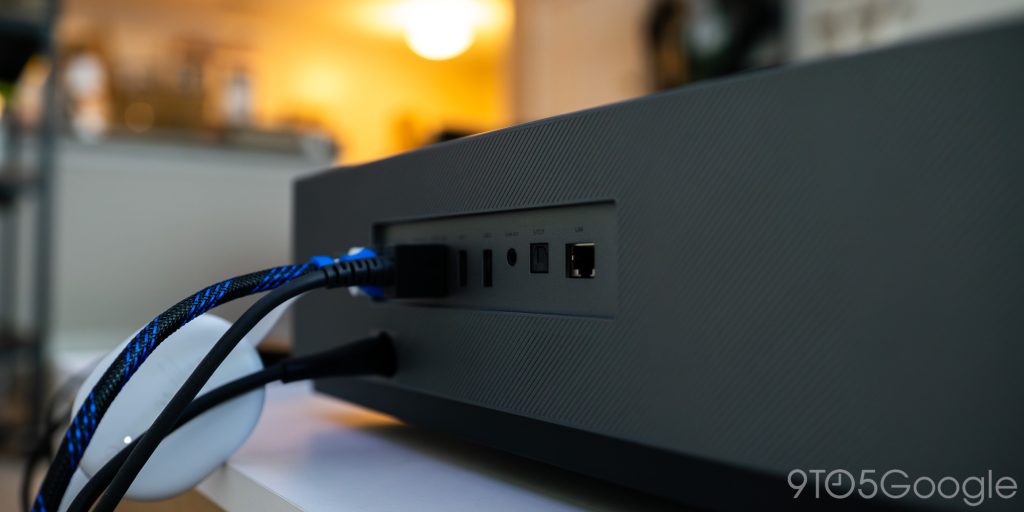
In all, I love the look of the Formovie Theater 4K projector. It’s unassuming and simple, yet packs a huge punch. The one thing in which I could do with a little more flare is the remote. If anything, the remote reminds me of a generic Roku or Walmart-quality streamer controller. It’s plastic and really doesn’t exude confidence in the Theater itself. It does get the job done, though, which is vital.
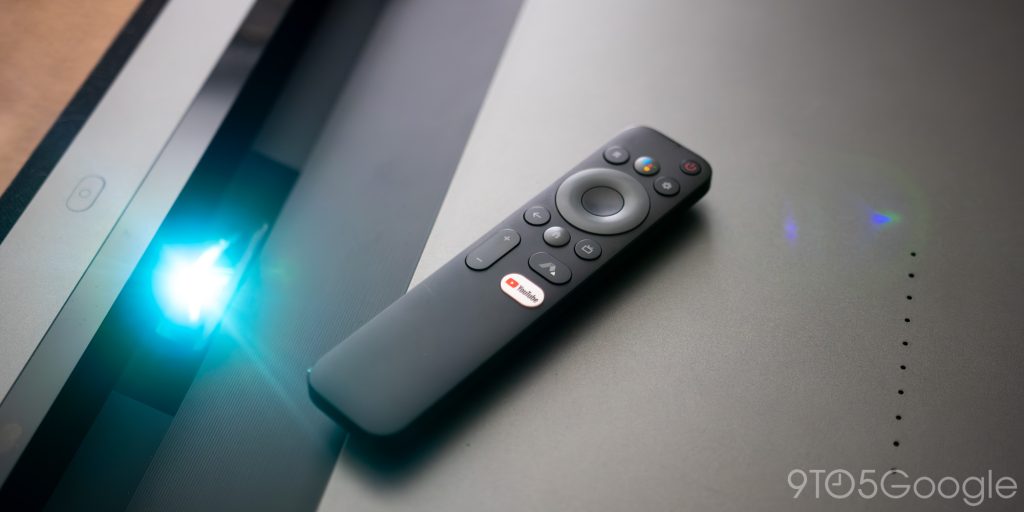
Laser performance
Right at the top of the projector is a wide well that holds all of the Theater magic. The Theater uses ALPD 4.0 tech that utilizes a triple laser light source for truly clear and crisp color reproduction. It has a throw ratio of 0.23:1, which translates to a 100-inch picture from 9-inches off the wall. This lays in the middle of what we’ve seen and casting a 120-inch image means I had to find a shorter TV unit that sits just under 12-inches off the ground.
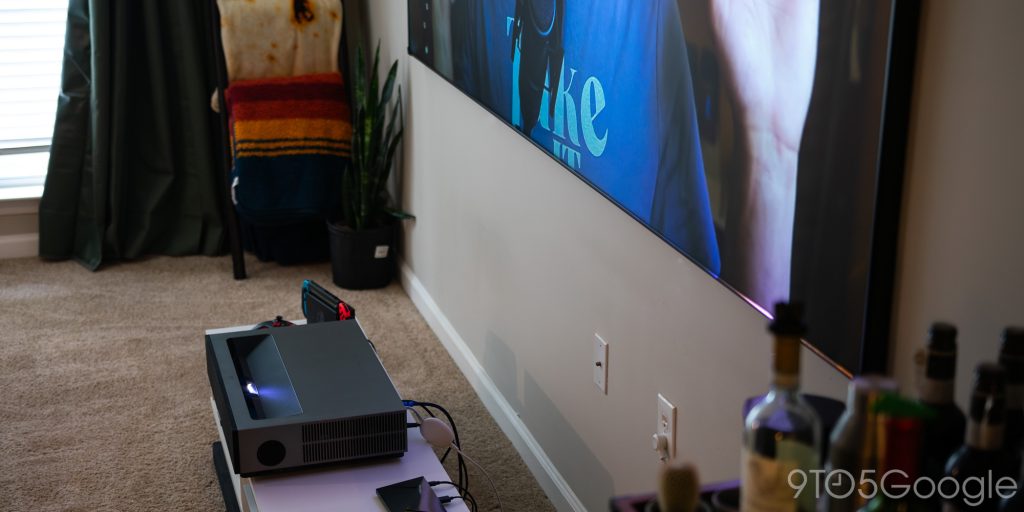
While not a huge deal, it’s something to note. Using a higher TV unit or table means a smaller image or one that sits much higher if you have a raised ceiling. If you plan on using the max screen size of 150-inches, you’ll need to sit the Theater on the floor, more than likely.
Formovie got 2800 ANSI lumens out of the Theater, which isn’t technically the brightest we’ve seen, but it would have you thinking otherwise. With a good UST screen, daytime streaming isn’t much of an inconvenience, and truthfully, just installing some light-blocking curtains really makes the experience much better. A high-quality UST screen will easily block the majority of light from overhead lights and tall lamps, with windows and low lamps being the enemy.
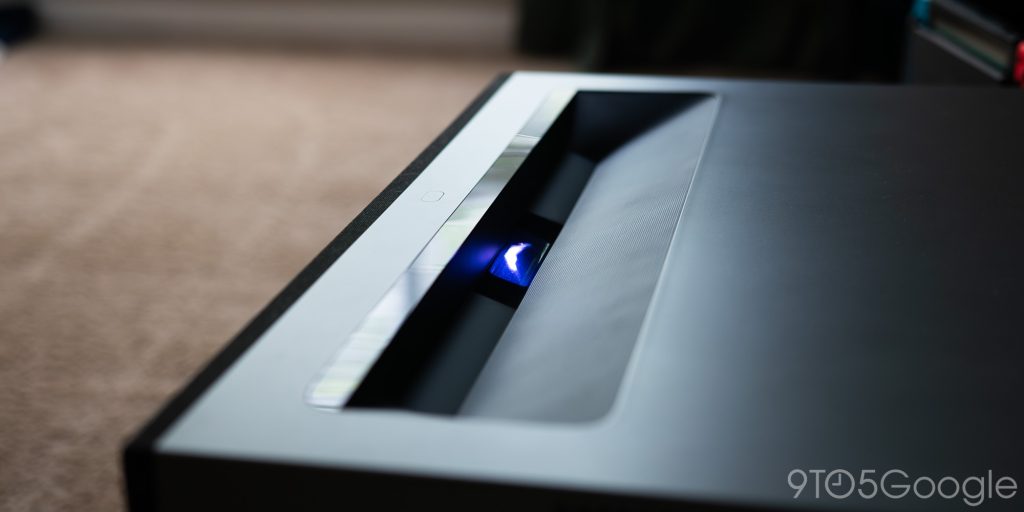
This is definitely a point of contention, with many arguing that there’s a huge drawback to watching on a UST projector during the day because you’re not getting the best performance possible. To that argument, I generally counter with the fact that you still get a massive HD picture that can operate very well during the day, unlike long-throw projectors that require complete darkness and are susceptible to any small amount of light.
To back that argument up, the Theater hits a high note with picture quality. While anything running at 1080p still somehow looks fantastic at 120-inches, the theater is capable of 4K and HDR10+ content, including Dolby Vision. One thing to note is that Dolby Vision darkens the picture slightly, though your eyes adjust quickly.
The Dolby Vision performance is simply great. Watching compatible content looks just as good as in the theater. Even 4K content looks fantastic at 120-inches – something that can’t be said for a lot of projector options about there.
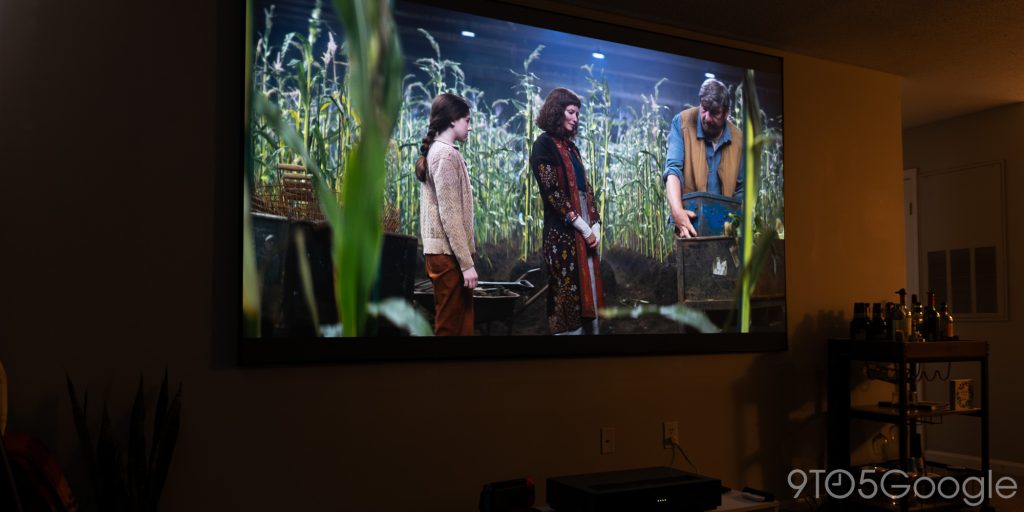
Where I really thought the Theater scored highly was in color reproduction of darker tones. A lot of projectors struggle with dark scenes and shadows by nature. Detail is often lost where there isn’t much light. The Theater, on the other hand, did very well in this regard. Shadows still had enough detail that you could pick out colors and shapes easily or as well as the director intends.
While the Theater does have MEMC software built-in, watching any sort of ball-based sport tested that to its limit. Soccer and golf were the biggest culprits, as any time a ball would fly into the air, it turned into three separate balls all falling at the same speed. This is an unfortunate issue with UST projectors, but the tech is getting better slowly. After a while, I got used to this occurrence, and it only happens in those specific instances.
Local gaming was another area in which I thought the Theater did really well. There was minimal latency involved, and everything I played looked really good. That just seems to be the cherry on top. As far as cloud gaming goes, it would be wise to use a Chromecast or Shield TV, as I didn’t have a great time connecting to the Formovie projector with a Bluetooth controller. In this instance, a middleman is the best choice.
Software and Android TV
At its core, the Theater runs Android TV. In reality, that’s all you need to get the experience you want out of the projector. You can, of course, add an external player like a Chromecast running Google TV or Nvidia Shield Pro, but I found that the vanilla experience was filled with less issues.

For whatever reason, YouTube TV is a hassle on my Shield TV, and the Chromecast often has issues running 4K content in its full quality. I always found myself switching back to the Android TV OS built into the Theater, as it offered the least amount of issues, and I was guaranteed the highest quality of anything I watched.
The setup is pretty painless, or at least as painless as UST projectors go. The Theater makes use of a digital focus motor, which helps tune your picture with as much precision as allowed, and keystone correction is included with an 8-point setup that can be adjusted granularly or in a quicker mode. I found the quicker mode worked just fine.
Tuning image color and brightness isn’t too hard either, though it might take you a little time. I’m very picky with how I want my picture to look, so I spent a good hour or two tuning it with Formovie’s picture options. of course, once it’s done you barely ever have to touch it again.


After a while of using the device, I was surprised at how snappy Android TV remained. Responses are quick and I didn’t have troubles with my experience, which was surprising and refreshing. I fully expected the Theater to slow down after some time, though it didn’t happen. That’s great, as the light source is backed up by a 20,000-hour guarantee.
Final thoughts
Overall, our time with the Formovie Theater 4K projector has been great. The UST projector is built well and offers a fantastic media experience utilizing Android TV. The picture is great and is packed into a nice piece of hardware that’s basically silent and unassuming.
The Theater gets great marks throughout the UST market and for good reason. It comes in at $3,499, which is higher than your average 70-inch TV but sits at a really nice spot in the sea of short-throw projectors currently on the market.
Buy the Formovie Theater – $3,199
Buy Epson 120-inch Silver Flex UST screen
FTC: We use income earning auto affiliate links. More.






Comments